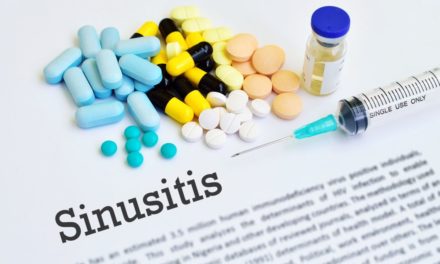There are several types of antibiotics. They are listed below. In general, you should take a probiotic for 60 days to restore normal flora after a course of antibiotics. Other nutritional needs my also present. Fluoroquinolones can cause damage to tendons. Joint support, like glucosamine, may be necessary. Liver support may be necessary following the use of cephalosporins or fluoroquinolones. Kidney support may be necessary following the use of Aminoglycosides.
The emergence of antibiotic-resistant bacteria due to the overuse of antibiotics is becoming an increasing problem. For that reason, it is a good idea to find natural ways to support the immune system. Supplements like vitamin C, vitamin A, or arabinogalactan and a diet that supports the immune system (review the information in the diet section) can reduce the need for antibiotics.
- Penicillins: This was the antibiotic discovered by Alexander Fleming in 1928 when he noticed Staph aureus being killed in a Petrie dish when exposed to Penicillium fungi. These drugs work on gram-negative bacteria. Penicillins work by preventing the cross-linking of amino acid chains in the bacterial cell wall. Newly produced bacterial cells have weak cell walls that easily rupture. Modern semi-synthetic penicillins include ampicillin, carbenicillin (discontinued), and oxacillin. The most common side effects reported include abdominal pain, headache, rash, diarrhea, and taste perversion. Penicillins may cause anaphylaxis in those allergic to penicillin, but the overall incidence of anaphylaxis is rare (0.01-0.05%). Some people may develop a super-infection due to the overgrowth of Clostridium difficile, following the use of any antibiotic, including penicillins. Symptoms may include severe diarrhea. Candida albicans, overgrowth may occur following penicillin use, resulting in the symptoms of thrush. Of course, taking probiotics for 60 days following antibiotic use can mitigate many of the side-effects.
- Cephalosporins: Cephalosporins are a large group of antibiotics derived from the mold Acremonium (previously called Cephalosporium). Their actions are like those of penicillin; they disrupt the bacterial cell wall. Common side-effects of cephalosporins include abdominal pain, diarrhea, dyspepsia, headache, gastritis, and nausea and vomiting. Temporary liver problems have also been reported. Allergic reactions may include a rash, hives, swelling, or rarely, anaphylaxis. Up to 10% of people with a history of penicillin allergy will also be allergic to cephalosporins. Rarely, seizures have been reported with some cephalosporins; the risk is greatest in those with kidney disease. Cephalosporins have also been associated with a reduced ability of the blood to clot leading to prolonged bleeding times. People with kidney or liver disease, nutritionally deprived, taking cephalosporins long-term, or concurrently receiving anticoagulant therapy are more at risk. Some people may develop a super-infection due to the overgrowth of Clostridium difficile, following the use of any antibiotic. Symptoms may include severe diarrhea. Candida albicans, overgrowth may occur following penicillin use, resulting in the symptoms of thrush. Of course, taking probiotics for 60 days following antibiotic use can mitigate many of the side-effects.
- Macrolides: Macrolides are a class of antibiotics that includes erythromycin, roxithromycin, azithromycin, and clarithromycin. Macrolides work by binding to a specific subunit of ribosomes (sites of protein synthesis) in susceptible bacteria, thereby inhibiting the formation of bacterial proteins. Side-effects include dose-related GI disturbances, including nausea, vomiting, abdominal cramps, and diarrhea. Taking the drug with food may help decrease GI disturbances. Tinnitus, dizziness, and reversible hearing loss are also possible. Cholestatic jaundice can occur. Liver damage and “vanishing bile duct syndrome” are possible. Erythromycin causes QT-interval prolongation and predisposes to ventricular tachyarrhythmia, especially in women, in patients who have QT-interval prolongation or electrolyte abnormalities, and in patients taking another drug that may prolong the QT interval.
- Fluoroquinolones (and Quinolones): DANGEROUS DRUGS—SEVERE SIDE EFFECTS. These are broad-spectrum antibiotics and are effective against a wide variety of bacteria. Fluoroquinolones were derived from quinolones by modifying their structure with fluorine. Because of the dangerous side-effects, the FDA warns against using these for common infections. They are not recommended for children under the age of 18, because they can damage weight-bearing joints. One of the side-effects of these drugs is tendon rupture. The most commonly reported side effects include diarrhea, nausea, abnormal liver function tests, vomiting, and rash. More serious side-effects include anxiety, insomnia, psychotic reactions, nerve pain, or a loss of feeling in the extremities, electrocardiogram (ECG) abnormalities, increased sensitivity to light, and other effects. These drugs can affect blood sugar and should be used with caution (and extra glucose monitoring) in diabetics. In people with myasthenia gravis, they may exacerbate muscle weakness and increase the risk of having a seizure.
- Sulfonamides: Sulfonamide antimicrobials are bacteriostatic, and do not necessarily kill bacteria. They work by interfering with the synthesis of folic acid, which is essential for nucleic acid formation and ultimately DNA and RNA. Allergies to sulfonamides occur in 2-3% of the population but is much more common in people with HIV. In some people, the reactions can be severe and require hospitalizations and steroids. Common side effects include gastrointestinal effects (such as diarrhea, nausea, stomach upset, vomiting), Candidiasis, fatigue, dizziness, headaches, rashes, and itchy skin. It will also cause folate deficiency and that nutrient should be taken after a course of sulfonamides.
- Tetracyclines: These were first developed in the 1940s and were obtained from Streptomyces bacteria. Tetracyclines inhibit protein synthesis in the microbial. They prevent bacteria from multiplying but may not necessarily kill them. They have been used (and perhaps overused) in veterinary medicine. It is common to come across bacteria that are resistant to tetracyclines. Side-effects of tetracycline include photosensitivity reactions (like exaggerated sunburn), skin rash or itching, sore mount or tongue, and vaginal discharge. Tooth discoloration (yellow-gray-brown) and bony growth retardation when given during tooth or bone development (last half of pregnancy, infancy, and during childhood up until the age of 8 years). Gastrointestinal effects such as acid reflux, diarrhea, nausea, vomiting, stomach cramps, or loss of appetite. Clostridium difficile associated diarrhea has been associated with nearly all antibacterial agents, not just tetracyclines. The patient may develop a headache. Intracranial hypertension (increased pressure within the brain) has been associated with tetracycline use. Symptoms include a headache; double, blurred, or loss of vision. Women of childbearing age who are overweight or who have a history of intracranial hypertension are most at risk. Toxicity to a developing fetus (tetracyclines can slow skeletal development). Tetracyclines should only be used in pregnancy if the benefits outweigh the risk. Drug Rash with Eosinophilia and Systemic Symptoms (DRESS). Symptoms include widespread rash, fever, and swollen lymph nodes, and is potentially fatal. Discontinue the tetracycline immediately. Some people may develop a super-infection due to the overgrowth of Clostridium difficile, following the use of any antibiotic. Symptoms may include severe diarrhea. Candida albicans, overgrowth may occur following penicillin use, resulting in the symptoms of thrush. Of course, taking probiotics for 60 days following antibiotic use can mitigate many of the side-effects.
- Aminoglycosides: Aminoglycosides are used mainly in the treatment of aerobic gram-negative bacilli infections. They have been used for Staphylococci and Mycobacterium tuberculosis. They are often used in combination with other antibiotics. The margin between a safe and a toxic dose is narrow, and monitoring is often needed. Impairment of kidney function and hearing loss are the most common side effects. Aminoglycosides are not well absorbed when given orally, so they need to be given by injection.





